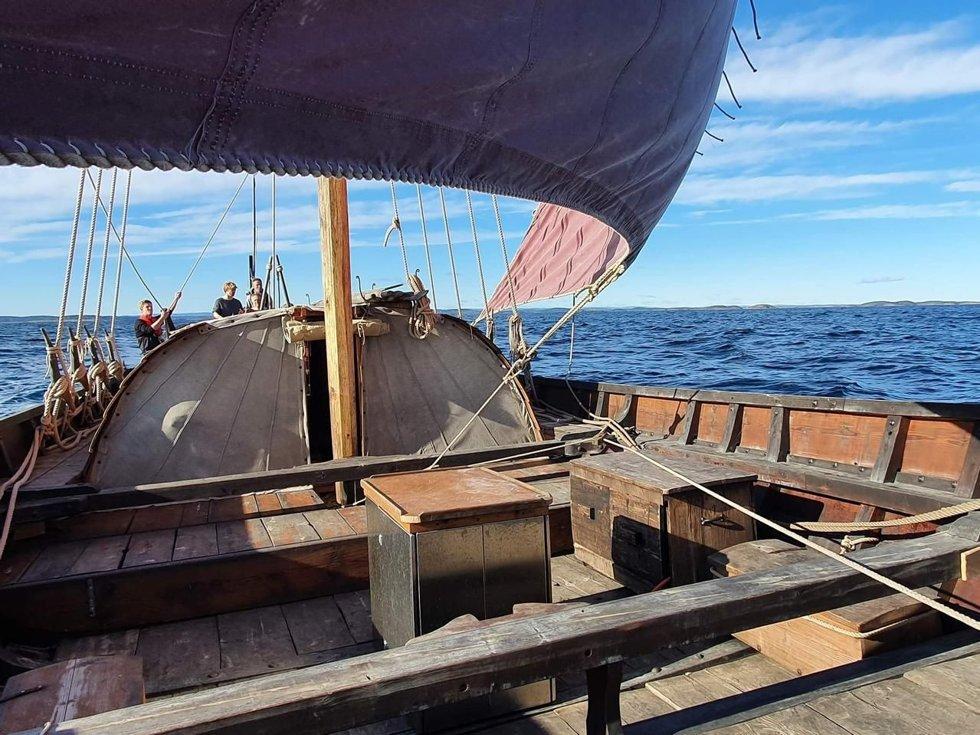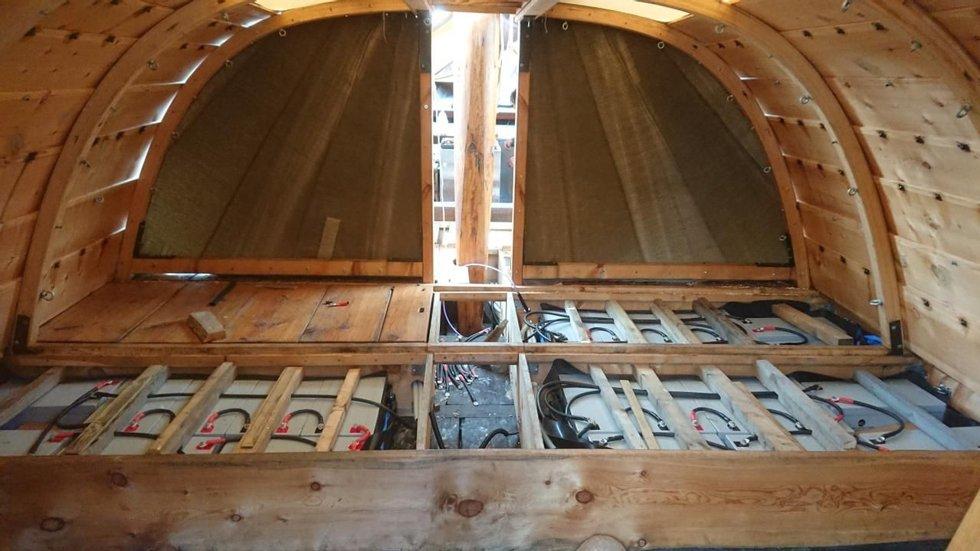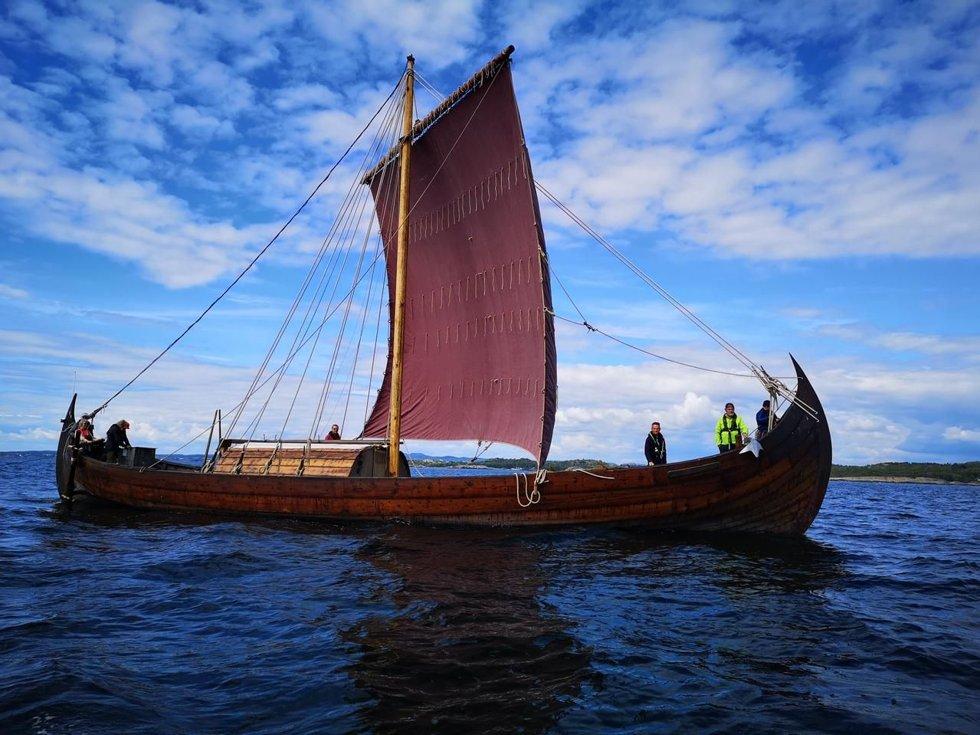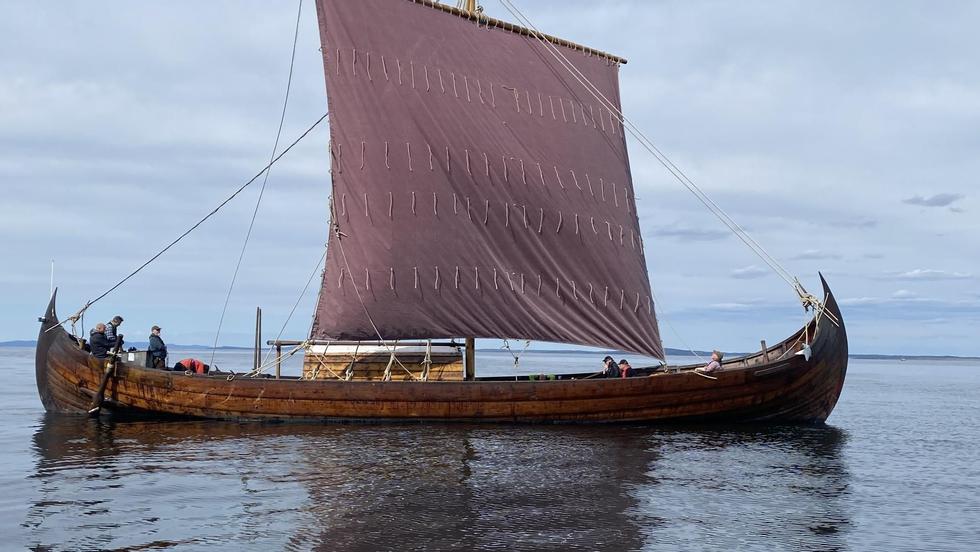Archaeologist Arne Emil Christensen, who led the excavation of the Klåstad ship in 1970, tells in an interview how one of the drainage ditches at Klåstad farm has gone right through the old woodwork.
Now what is left is on display at the Slottsfjellsmuseet in Tønsberg, but a group of enthusiasts have taken what Christensen refers to as Norway’s fourth Viking ship as a starting point, and built the ship “Saga Farmann”.
“Saga Farmann” is equipped with four electric pod drives from the Norwegian company SeaDrive, which makes it significantly easier to add than in the 20th century. Photo: Lars Tommy Wensås
Brown stone
According to Christensen, the original Klåstad ship must have been loaded with whetstones from Eidsborg in Telemark, of which a large quantity was found close to the wreck.
Since the middle part of the ship was used for cargo space, Christensen reckons that it only had oars furthest forward and furthest aft, which may have made it more difficult to maneuver in strong winds.

The cabinet with inverters, regulators and 160A fuses is used as a dining table. Photo: Tonie Steffensen
Prevents sinking
The cause of the sinking is unknown, and dating of the wood indicates that it dates from the year 998, so there is no report from the Accident Investigation Board.
But the modern edition “Saga Farmann” has adopted technology supplied by the Norwegian company SeaDrive to prevent history from repeating itself.
According to the chairman of the Farmann boat building team, Dan Cato Fagernes, four electric pod drives below the waterline will ensure that the barge can hatch and park in windy and difficult conditions.

The batteries in “Saga Farmann” are located under the floor of the cabin, where the crew sleeps. The weight of the batteries also acts as ballast to give the schooner stability. Photo: Dan Cato Fagernes
Hidden facility
Under the deck planks in the cabin amidships are six battery banks, which also act as ballast to keep the schooner on a straight keel.
Control panel, fuses, wires and switches are hidden, to provide the most authentic experience possible.
The comfort level is also in line with what the Vikings experienced in the 9th century, and free guards are taken in sleeping bags inside the cabin.

The sail on “Saga Farmann” measures approximately 95 square metres, and in the Viking Age it would probably have cost as much as the rest of the ship. Photo: Lars Tommy Wensås
Many late nights
The electric motors make it possible to maneuver the over 20-metre-long hull at port calls, but propulsion takes place primarily with the help of the sail of approx. 95 square meters.
Interestingly, Christensen says in the interview about the Klåstad ship, that the sail most likely cost as much as the schooner in the Viking Age.
The price of “Saga Farmann” is unknown, but it has probably cost several hours of hard work and late nights.
2023-05-17 19:27:34
#Saga #Farmann #electric #Viking #ship
